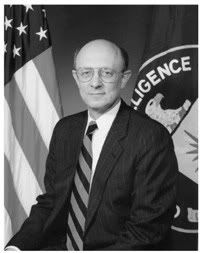[The Vector] James Woolsey on Renewable Energy and National Security
![[The Vector] James Woolsey on Renewable Energy and National Security](https://www.2greenenergy.com/wp-content/uploads/2011/02/r_james_woolsey14.jpg)
James Woolsey was Director of the United States Central Intelligence Agency from February 5, 1993 until January 10, 1995, and stands among the most vocal and credible proponents of renewables, making arguments touching on national security, global climate change, and economics. Featured in Thomas Friedman‘s Discovery Channel documentary Addicted to Oil, and in the 2006 documentary film “Who Killed the Electric Car?“ he makes a series of powerful statements on the imperative for the US to move away from fossil fuels. Here are few of the highlights of his position.
There are two aspects of energy and security, the first of which is the security of the grid. We don’t have a a supply problem. We don’t have the European-type problem of having some guys who might act up like Putin controlling the fuel for our electricity; we pretty much make our own electricity. But the aged nature of our transmission grid produces several big national security problems, including vulnerability of the transformers and other things to terrorist attack, hacking in the SCADA systems, and EMP (electromagnetic pulse). With countries like North Korea and Iran probably getting nuclear weapons and being able to just launch something from 200 miles off the coast — 200 miles up — an EMP could take out a huge share of the grid.
So, you’ve got those grid vulnerability problems for the electricity part of our national energy set-up, and then you have vulnerability with respect to oil. You could say that the supply network is potentially vulnerable; if you take out the right buildings in Louisiana, you could really screw up control of the oil pipelines. So generally speaking, you have concern about terrorist attacks. But oil has a whole range of national security problems associated with it that don’t really exist for electricity. So, I think there’re two big segments of the energy structure, electricity and transportation, that have slightly overlapping but somewhat different types of national security vulnerabilities.
The, in terms of externalities, you got pollution; you may have already seen Boyden Gray’s piece in the Texas Review of Law and Politics about three years ago on the aromatics. Boyden puts the cost in damage to peoples’ health and medical costs total, at approximately $250 billion a year from the aromatics.
More on this shortly…


[…] Source < National Irresponsibility in Energy Policy Changing Hearts and Minds on Cap and Tax > Similar articlesThe Truth About Solar Energy Will it lead us to the promised land? I have written about solar energy as it relates to large solar arrays and the huge amount of land that is needed. Here is an update. Secretary of the Interior Ken Salazar announced plans to blanket 1,000 square miles of land … […]